Plato wrote that orichalcum was used to adorn a temple in Atlantis, and ancient Romans made coins of this copper and zinc alloy, but this legendary metal seemingly vanished from the Earth over 1,000 years ago.
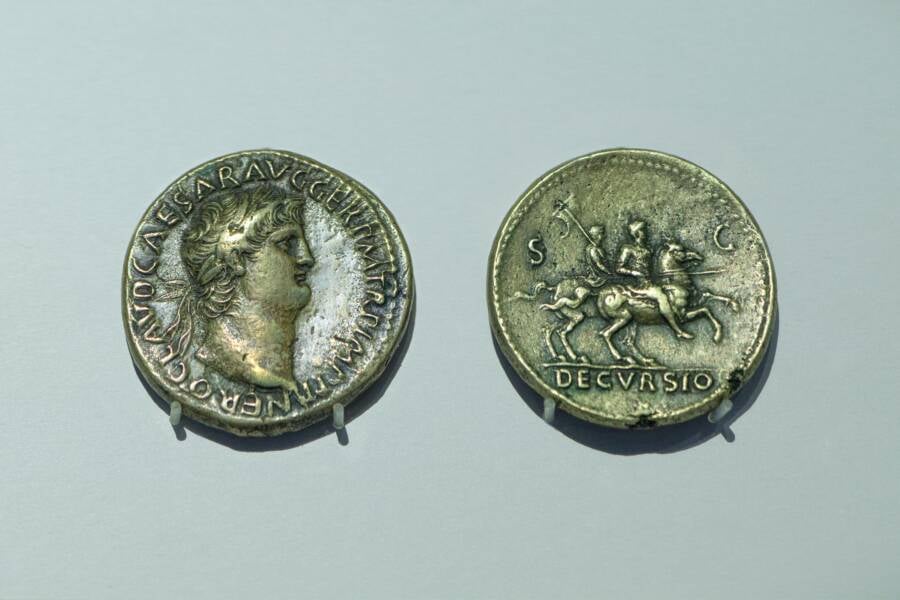
WHPics / Alamy Stock PhotoA Roman orichalcum coin depicting Emperor Nero.
Orichalcum is a metal shrouded in mystery. First mentioned by ancient Greek writers around the seventh century B.C.E., orichalcum was described as golden and almost otherworldly. The term itself derives from the Greek word oreikhalkos, meaning “mountain copper,” and it appears in numerous ancient texts.
For centuries, historians weren’t sure if orichalcum was real. Although it was mentioned by famous figures like Plato and Cicero, it seemingly vanished from the Earth in ancient times. Even if it did exist, nobody knew exactly what sort of metal it was.
Then, in 2015, dozens of ingots of orichalcum were found in the 2,600-year-old wreckage of a ship off the coast of Sicily. Analysis revealed that the metal was an alloy of copper and zinc that was very similar to brass. While there are still questions as to whether the orichalcum mentioned by the Greeks and Romans was the same metal, much of the mystery surrounding the substance was cleared up with the discovery.
However, orichalcum is still related to another mystery: Atlantis. Plato wrote that the metal was mined there and was used to build a prominent temple on the island nation before it sank to the bottom of the sea. Even today, believers in Atlantis think orichalcum may be the key to locating the lost city.
What Was Orichalcum, The Mysterious Metal Mentioned By Ancient Writers?
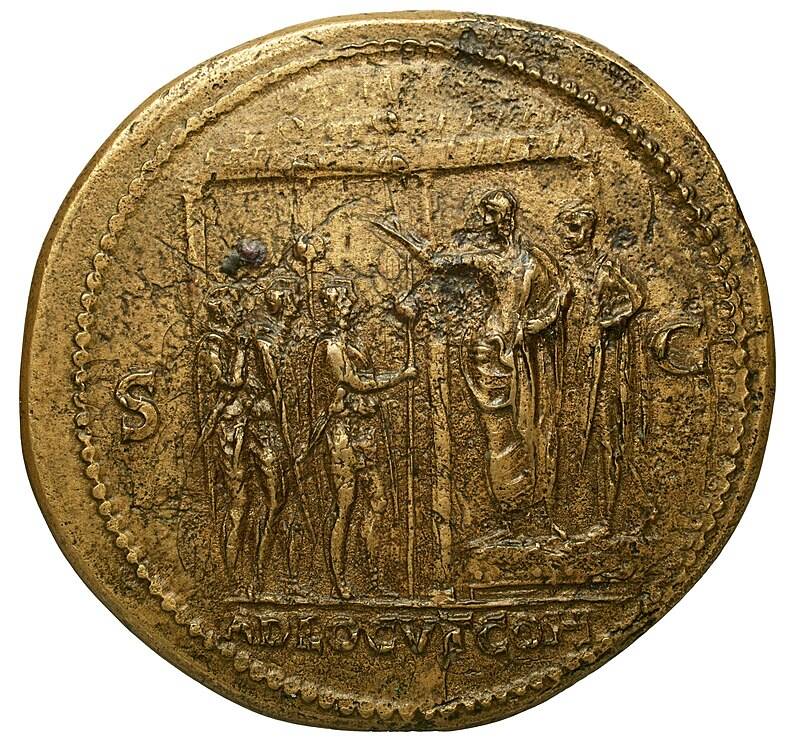
Public DomainAn orichalcum coin from the Roman Empire.
Orichalcum first appears in the historical record in the seventh century B.C.E. with the ancient Greek poet Hesiod, and the Homeric Hymn to Aphrodite also mentions the metal. The poem reads: “On her immortal head they laid a crown that was wonderfully made and in the pierced lobes of her ears they hung flowers of copper from the mountains and precious gold.” The Greek word for orichalcum, oreikhalkos, directly translates to “mountain copper.”
The metal was described as similar in appearance to gold, and it was highly prized. In the Aeneid, Virgil wrote that the breastplate of the main antagonist, Turnus, was made with orichalcum. And Cicero noted in De Officiis that the alloy was so similar to gold that people often confused the materials. In fact, Julius Caesar purportedly once stole 3,000 pounds of gold from Rome’s Capitoline Hill and replaced it with orichalcum.
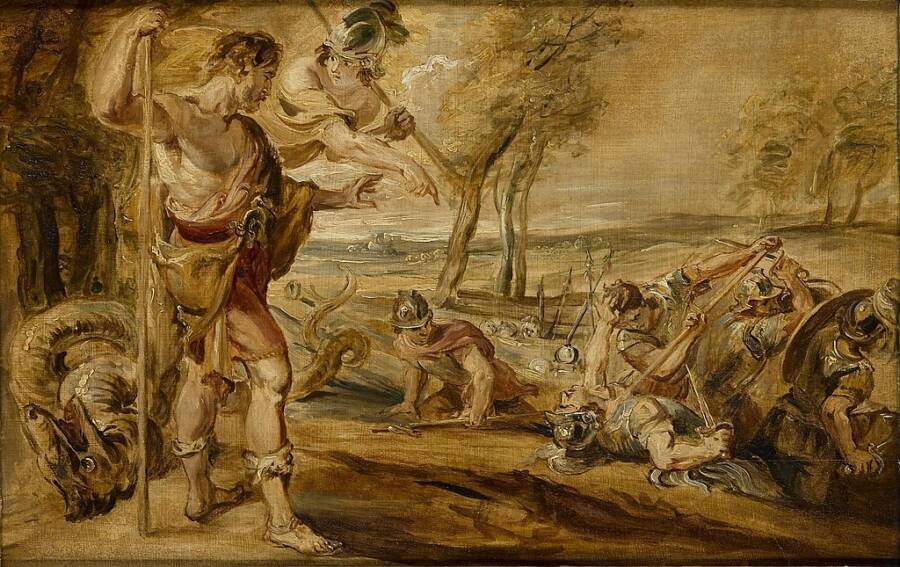
Public DomainA depiction of Cadmus, an ancient Greek hero credited for creating orichalcum, by Peter Paul Rubens.
Despite these references, however, no one really explained exactly what orichalcum was. Its composition was as mysterious as its origins.
Then, in 2015, dozens of ingots of orichalcum were found in a 2,600-year-old shipwreck off the coast of Sicily. After testing the metal, researchers discovered that orichalcum was essentially brass, though it was likely crafted using a different process. It was made of 75 to 80 percent copper, 15 to 20 percent zinc, and trace amounts of nickel, lead, and iron.
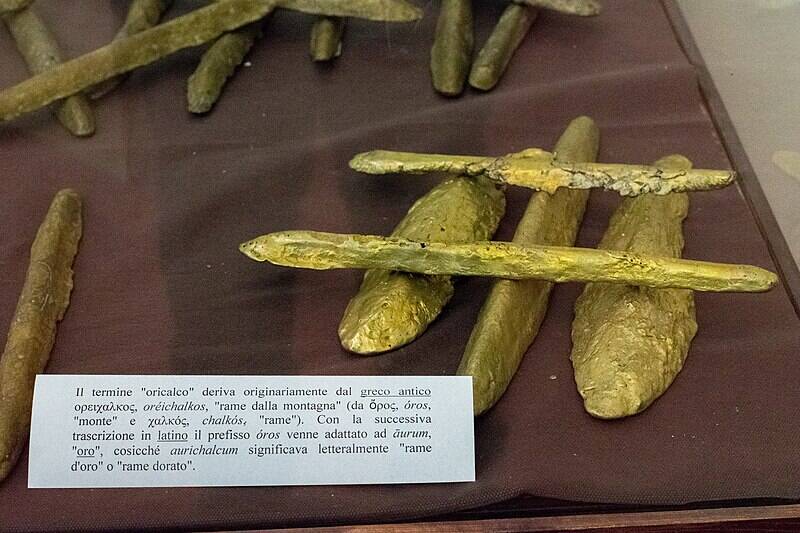
Emanuele Riela/Wikimedia CommonsIngots of orichalcum found in a shipwreck off the coast of Sicily.
The ancient Romans also used a metal they called orichalcum to make coins beginning in 45 B.C.E., such as the sestertius, dupondius, and semis. These coins were also made with zinc and copper, though it’s unclear whether this is the same alloy referenced in Greek texts from the same time period.
After all, the ancient Greeks emphasized how otherworldly orichalcum was — and it was even connected to the mythical story of the lost city of Atlantis.
How Orichalcum Has Been Connected To Atlantis
The story of Atlantis dates back thousands of years. Legend says that a highly advanced civilization once existed on the island nation, but after its population incited the rage of the gods, the city was destroyed and sank to the bottom of the ocean.
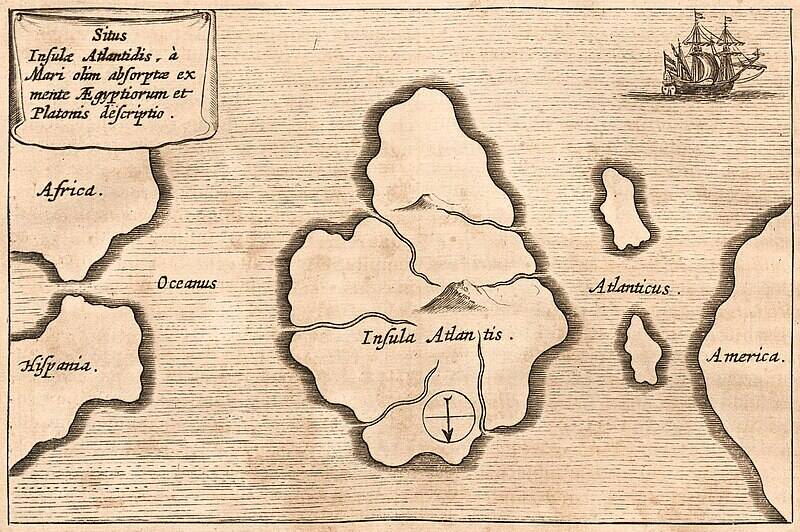
Public DomainMany scholars have surmised that if Atlantis did exist, it was located in the Atlantic Ocean near the Strait of Gibraltar.
The Greek philosopher Plato wrote of Atlantis in his works Timaeus and Critias, which date to around the fourth century B.C.E. It was in Critias that Plato described orichalcum, stating that it “was dug out of the earth in many parts of the island” and was “more precious in those days than anything except gold.”
Plato also wrote that the Temple of Poseidon in Atlantis “flashed with the red light of orichalcum… All the outside of the temple, with the exception of the pinnacles, they covered with silver, and the pinnacles with gold. In the interior of the temple the roof was of ivory, curiously wrought everywhere with gold and silver and orichalcum; and all the other parts, the walls and pillars and floor, they coated with orichalcum.” What’s more, the laws of Poseidon were “inscribed by the first kings on a pillar of orichalcum” in the temple.
Of course, Atlantis didn’t exist, but orichalcum did. Was this metal mentioned by Plato the same used to mint coins in ancient Rome, though? That remains a mystery to this day.
After reading about the mysterious history of orichalcum, go inside the stories of 13 sunken cities around the world. Then, read about six of the most terrifying gods from world mythology.





